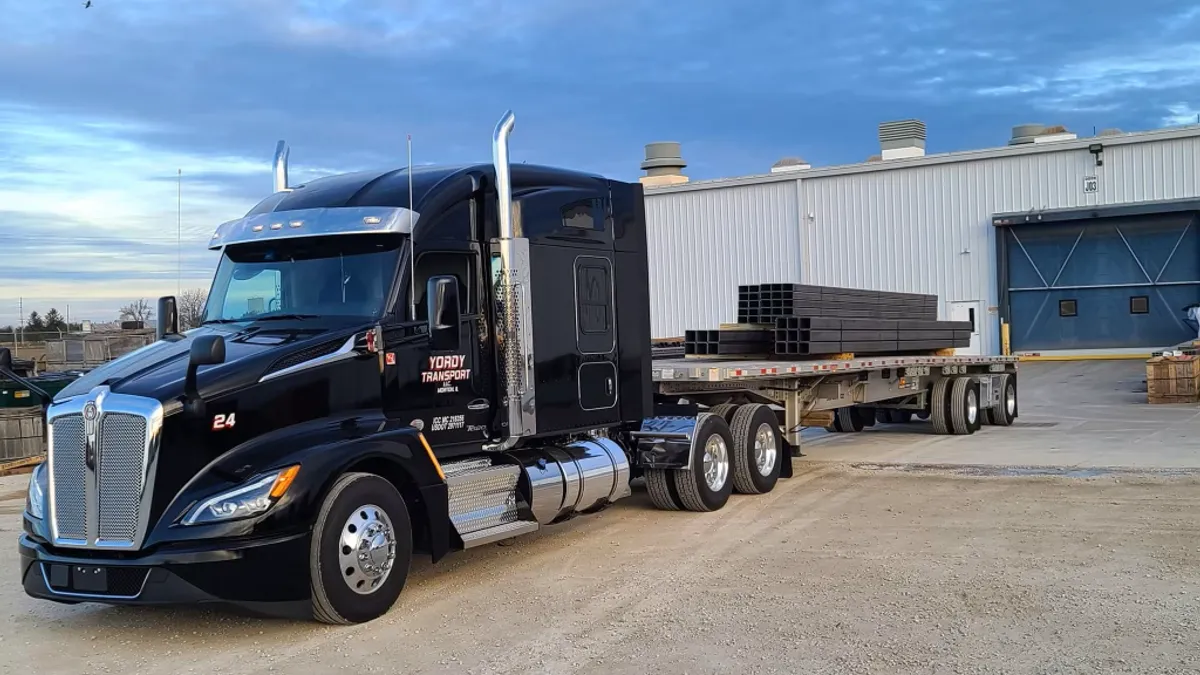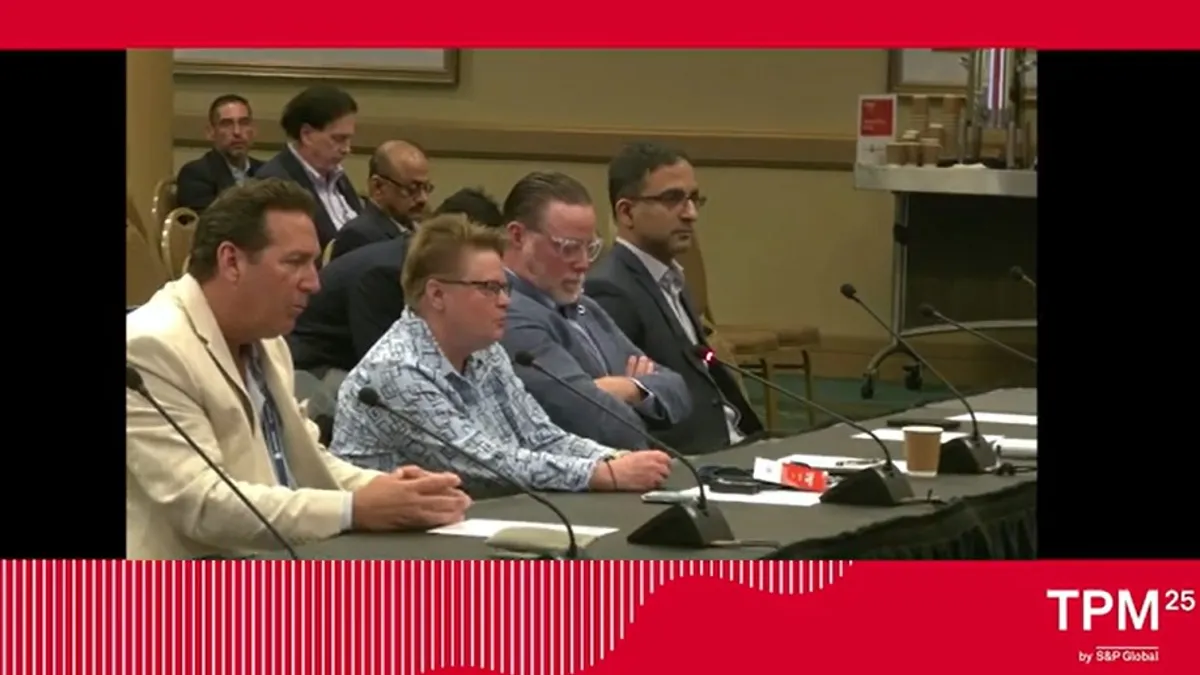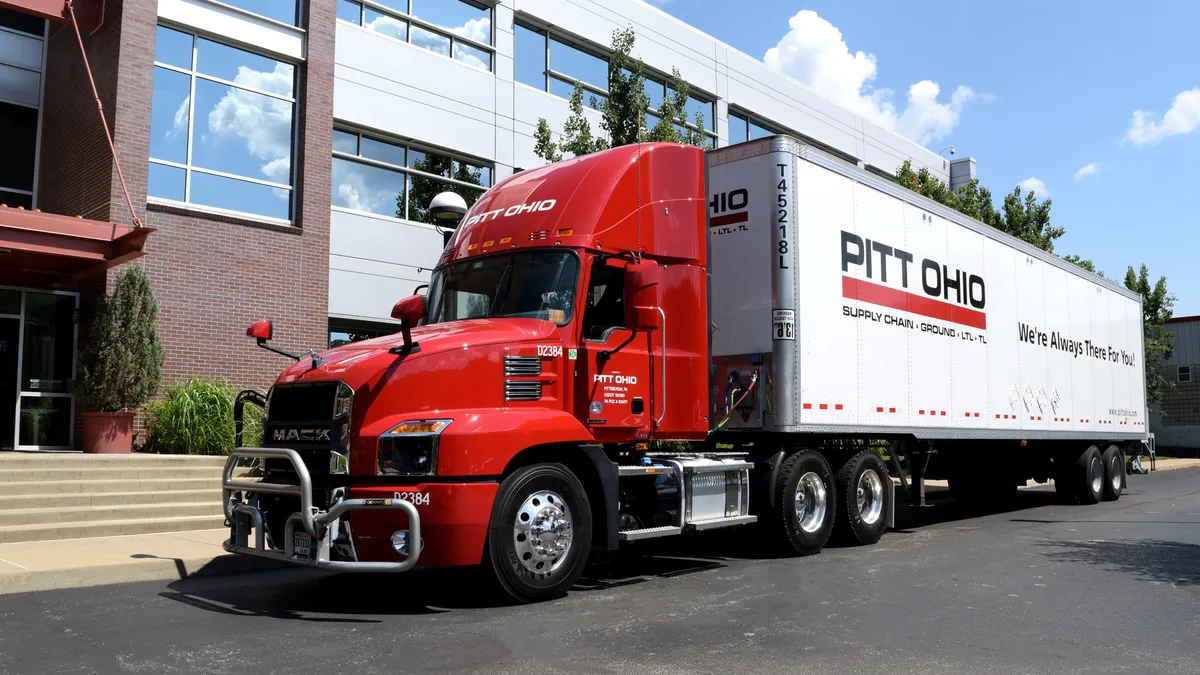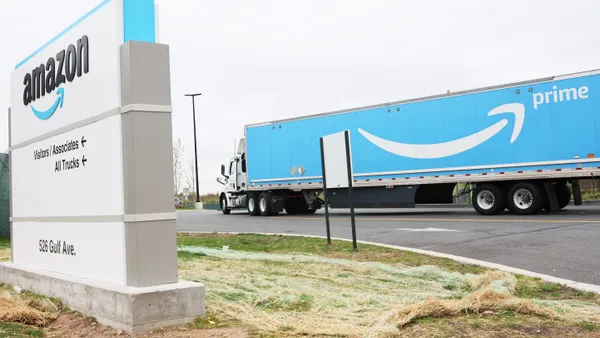Contract rates exceeded spot rates for the first time in seven months during the last week in January, according to DAT, breaking a remarkable run for the spot truckload market.
"Since the pandemic began in March last year, dry van spot rates increased by almost 90 cents a mile, while contract rates increased by around half that amount during the same period," said Dean Croke, DAT principal analyst. "As a result, shipper freight bids, negotiated in late 2020 during the peak of the spot market rally, resulted in higher negotiated contract rates for 2021 freight."
The monthly average contract rates are up 19% YoY, at $2.25 per mile. That is 41 cents higher than the same time last year, Croke said. Spot rates are now down to $1.98 per mile.
"So the market inflection point for freight rates has arrived," Croke said.
Contract rates surpass spot rates
Croke said he expects the trucking and freight markets for the first half of 2021 to be a lot like the latter half of 2020, with consumer demand keeping per-mile rates higher. That means even though contract rates are going up, spot rates won't plummet.
"We're seeing support for spot rates around $2 per mile ... which is 56 cents per mile higher than this time in February 2020," Croke said. "[Carriers'] margins are still quite good, given diesel prices are down 35 cents per gallon over the same time frame."
For contract carriers, higher rates in their market will translate to better margins, Croke said, provided they can find drivers. And better contract rates should translate into more consistent freight volumes for carriers.
That forecast is likely to be welcomed by carriers, which endured a month of softer rates after the initial onset of COVID-19. The spot market rise seemed unlikely after spring's panic buying subsided. But as spring turned to summer, consumers kept ordering items through websites.
Croke said spot rates overtook contract rates in dry van and reefer around July 4. Flatbed spot rates have not caught up to contract yet, and they have been below contract since early 2018, he added.
Seeking consistency through contracts
Freight demand was so high in 2020, some shippers scrambled to get carriers.
At U.S. Xpress, the shipper community approached the carrier about addressing increased demand, according to Dustin Koehl, U.S. Xpress senior vice president of sales. Koehl said U.S. Xpress recently convened a roundtable of shippers to talk about freight and contracts.
"They're just looking for consistency," said Koehl. "In service rates and capacity."
In return, owner-operators and other spot-market users will get their own consistency, Croke said. Better contract rates could provide "an avenue for some owner-operators to align with larger fleets to avail themselves of better paying contract rates, and more predictable/consistent weekly revenues in the process," Croke said.
"So, the market inflection point for freight rates has arrived."

Dean Croke
Principal Analyst at DAT
Croke agreed that shippers were nervous about obtaining capacity. And they noted carriers have their hands tied as to how much business they can add. That is in juxtaposition to how carriers responded during the freight boom of 2017-2018.
"Carriers were not adding as much capacity as they did in 2018," said Croke. "The large carriers have not been able to find drivers."
Drivers to match the freight demand
Croke said the challenge for contract carriers will be adding capacity, and by capacity, he doesn't mean tractors or trailers. To guarantee such capacity, shippers are now offering higher contract rates to carriers. Data from FreightWaves Sonar shows shippers spent 12% more per mile for dry van TL in Q4, compared to the same time frame in 2019.
The motivation is that the market is rife with driver shortages and coronavirus-related turmoil.
Last April, owner-operators parked their big rigs near the White House and sounded their horns, in protest of spot rates that had dropped. The drivers wanted Congress and the FMCSA to look into the procedures of brokers, who they partially blamed for the low rates.
Now, it's drivers themselves who may be to credit for the higher spot and contract rates, analysts said.
The industry was already dealing with a driver shortage when COVID-19 arrived. There are many signs the pandemic has made the shortage worse.
Croke said training schools' licensing branches have slowed the number of new drivers coming into the sector. Koehl said as many as 200,000 fewer drivers may be the result of slower training and licensing. And the Drug and Alcohol Clearinghouse may have taken 50,000 drivers off the road.
And that doesn't count the number of drivers laid off during the pandemic onset, drivers who didn't come back.
"The big 'if' is demand. [Vaccine concerns] just have this compound effect on the supply chain that is limiting their ability to push freight out."

Dean Croke
Principal Analyst at DAT
U.S. Xpress said the situation "will likely result in decreased capacity and driver pay increases" in its 2021 forecast.
"Capacity will remain tight based on a driver shortage and longer-term demand uncertainty driven by the ongoing pandemic," said Croke.
The freight may not last forever, but for now, steady contractual relationships are a salve for market ups and downs.
Croke sees one problem for carriers, and freight in general, and that is how COVID-19 is handled. A poor fight against the pandemic could mean dwindling economic returns. Pessimism among consumers about the battle against COVID-19 could mean less demand for trucks.
"The big 'if' is demand," said Croke. "[Vaccine concerns] just have this compound effect on the supply chain that is limiting their ability to push freight out."






















